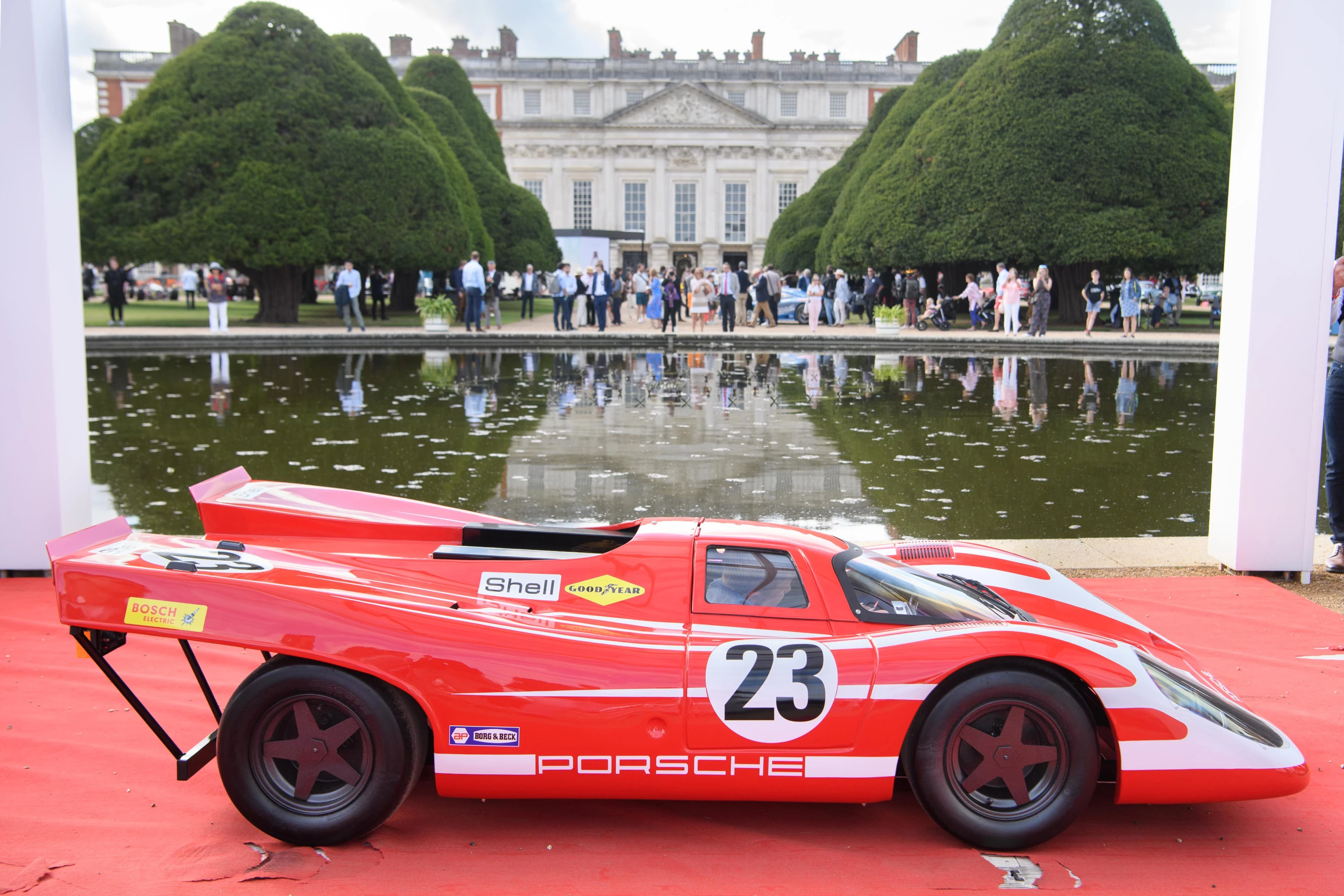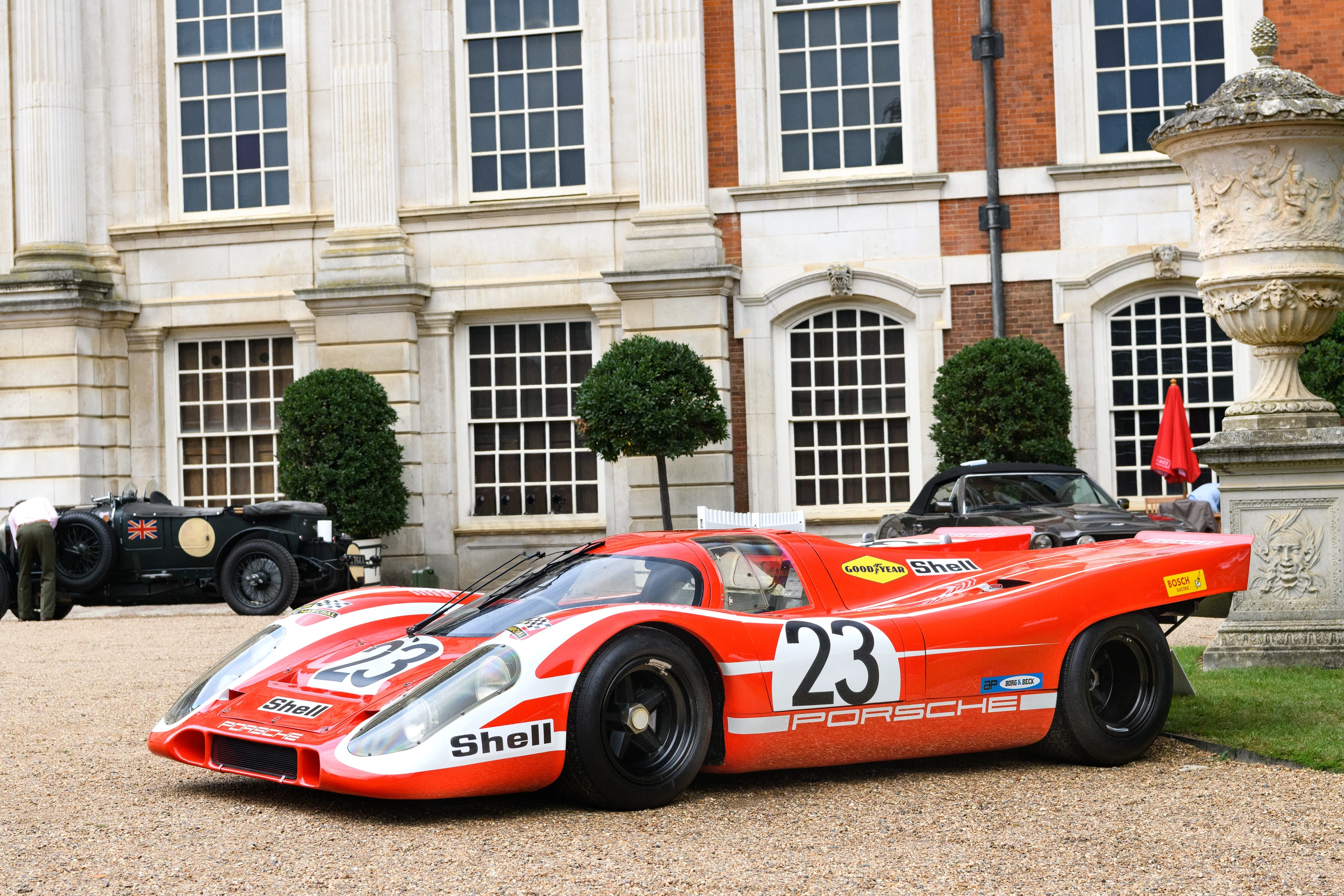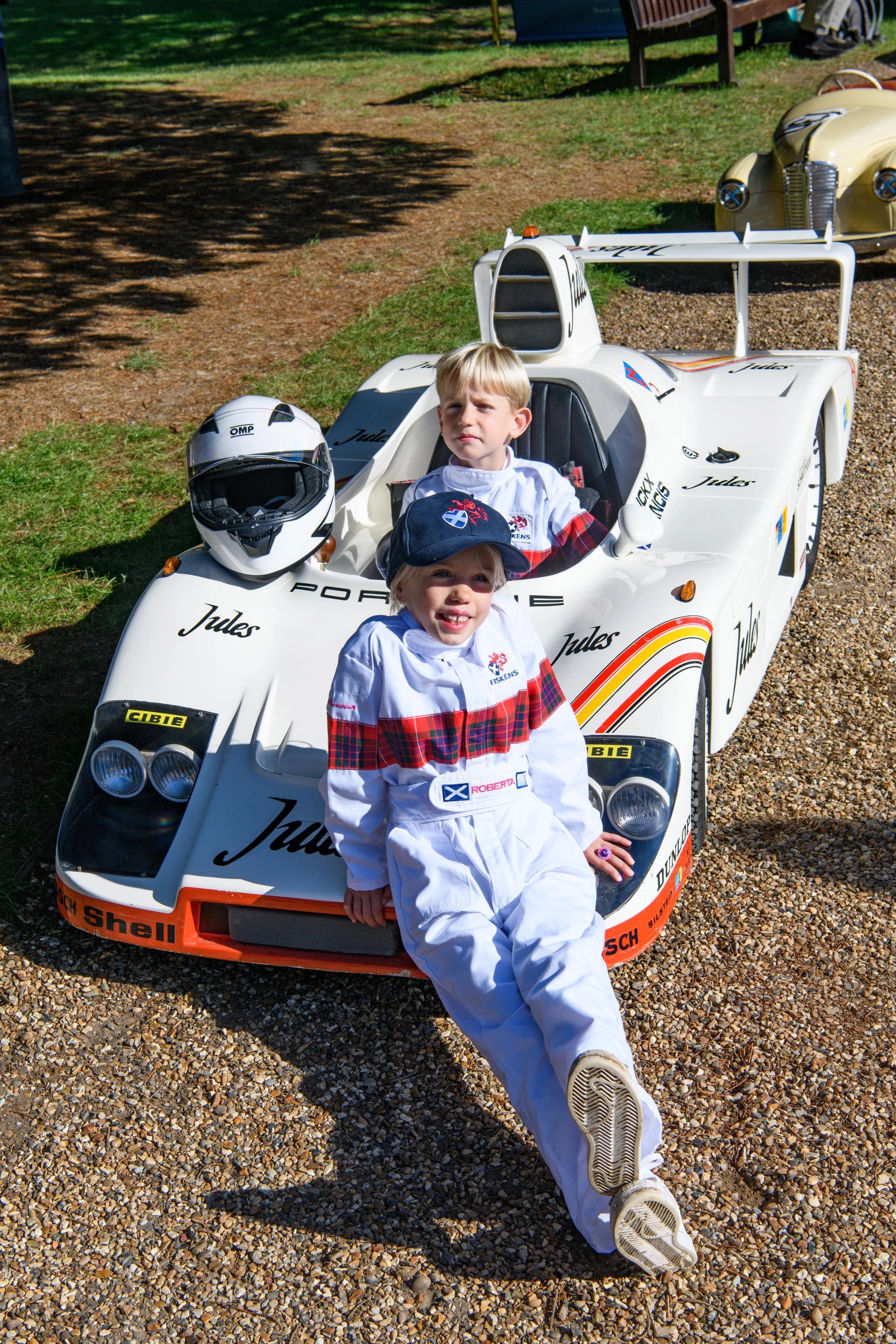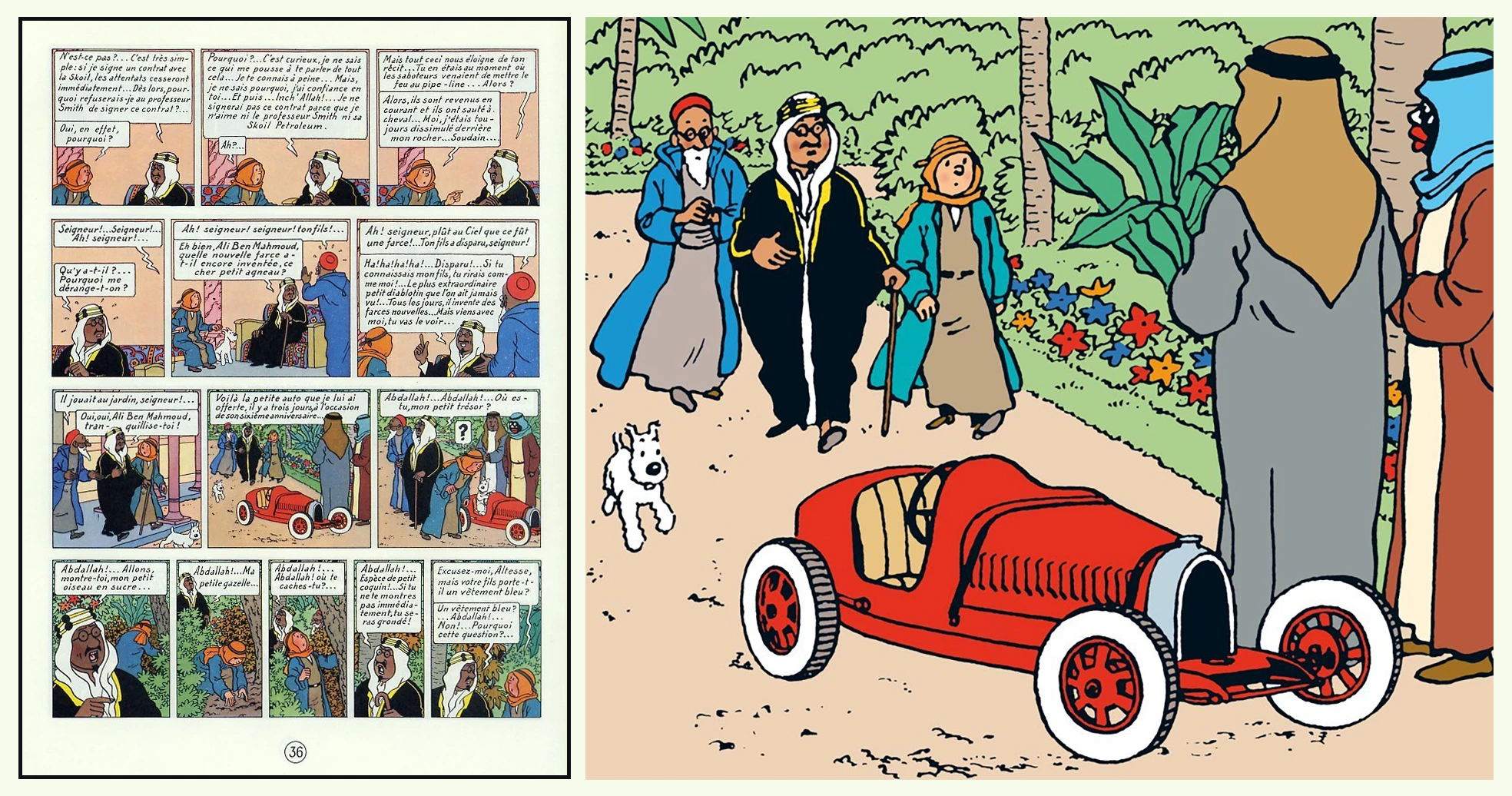The world’s first elite Junior Car Concours event took place last week as part of the world-renowned Concours of Elegance, staged at Hampton Court Palace in London. We expect the remarkable images contained in this article will catalyze a resurgence in the demand for half- and two-thirds scale replicas and serve as the impetus for a Junior class to be added at Concours events around the globe.
A cursory glance around the collector car auctions of the world leaves us in no doubt that there are thousands of eligible scale models out there suitable for Junior concours events, many made as tribute cars by manufacturers. Porsche, Mercedes-Benz, Bugatti, Alfa Romeo and Aston Martin have all produced such cars, and the first children's pedal cars were produced in the 1880s with the advent of Karl Benz' Motorwagen, but there are also hundreds of one-off creations by master craftsmen who have put in thousands of hours creating a jewel for the apple of their eye.
Every iconic collector car has given rise to a tribute scaled car from a children's car manufacturer and our research for this article unearthed many of them. They're contained within the image gallery with captions and links to the source auction. As the image gallery captions illustrate, a replica of an iconic car from automotive history, with thousands of hours invested in its creation, can still be purchased at auction for under $20,000.
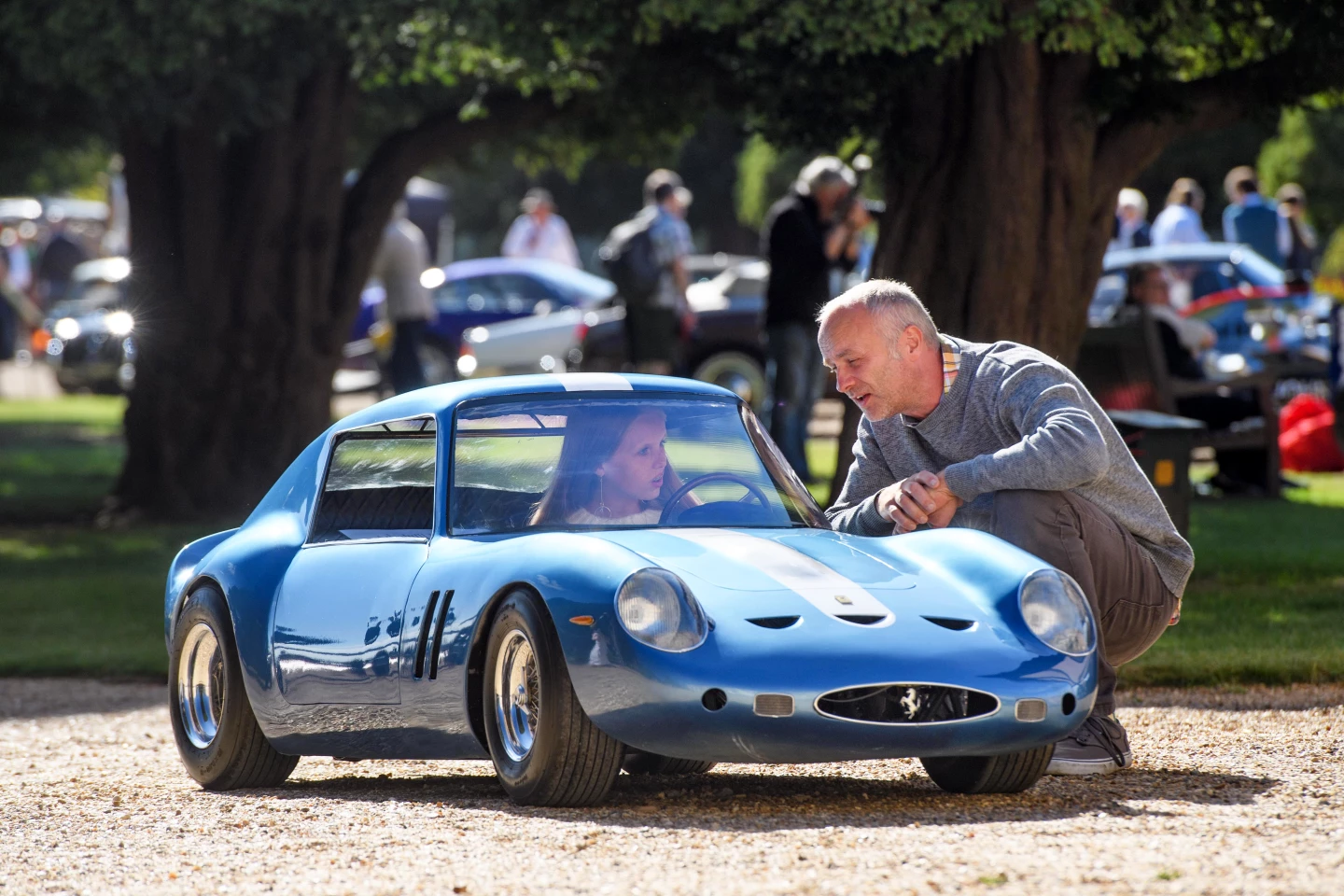
We're in the process of putting together a listing of the world's most valuable children's (also known as junior or scaled) cars and the top 100 doesn't look all that dissimilar to the top 100 list for genuine cars.
All the same elite auction houses are on the list (RM-Sotheby's, Bonhams, Gooding & Company, Artcurial, Barrett-Jackson, Mecum, Christie's et al.), with the major difference being that instead of Ferrari dominating as it does with full-sized cars, Bugatti dominates in children's cars. Indeed, 12 of the 15 most valuable scale cars ever sold at auction are the Bugatti Baby electric Type 35s produced by the Molsheim factory in the late 1920s and early 1930s.

We're also in the process of working out what the major models are in this previously invisible marketplace. As can be seen above, there are some children's cars of remarkable quality that have been created over the last century and a half.

Ettore Bugatti wasn't the first to manufacture children's cars, but it was his decision to build an electrically-powered half-scale car as a 4th birthday present for son Roland that unwittingly began a global children’s car craze for the uber-rich.
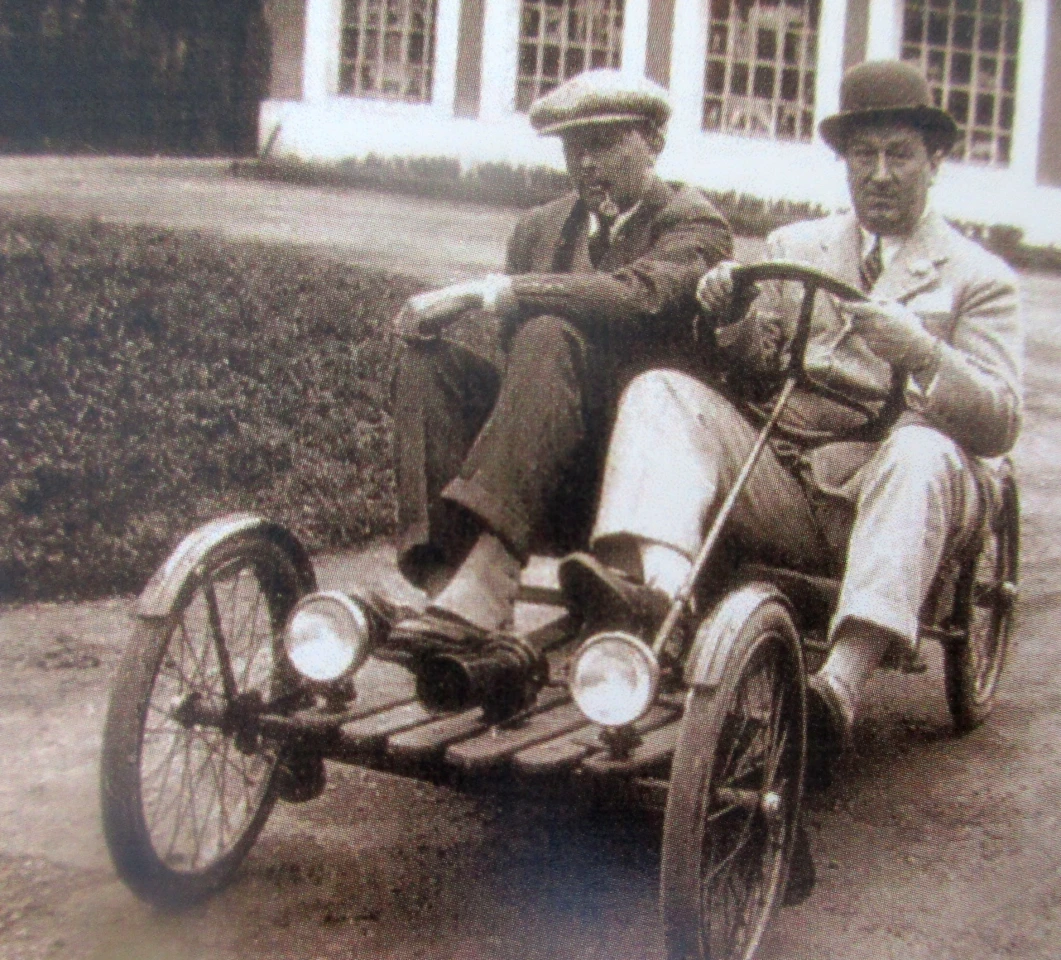
You can't say that Ettore Bugatti didn't do his homework. The above picture of the automotive genius and King Leopold of Belgium is frequently captioned with information about the vehicle being the prototype of the Bugatti Baby. It may well have been a prototype of sorts, but it is an American-manufactured children's car first built in 1916 and known as the Auto Red Bug Roadster. These miniature EVs currently change hands for a lot less than the Bugatti Babys, but we suspect they will eventually rival the "short chassis" Bugatti in price on the auction block as the collectible children's car market matures. Indulging in this marketplace for children now is essentially investing in their future, because the most collectible children's cars should significantly appreciate in value just in time to pay for their tertiary education.

Roland turned four on 23 August 1926, and was presented with a half-scale Bugatti Type 35 electric racing car by his father, who was already the foremost automotive design genius of the 20th Century.
The legendary Bugatti Type 35
It is important to understand the context of the Bugatti Type 35 racing car to fully grasp the unique situation that played out. The Type-35 debuted just two years earlier and had begun the most comprehensive dominance of motor racing that the world has ever seen.
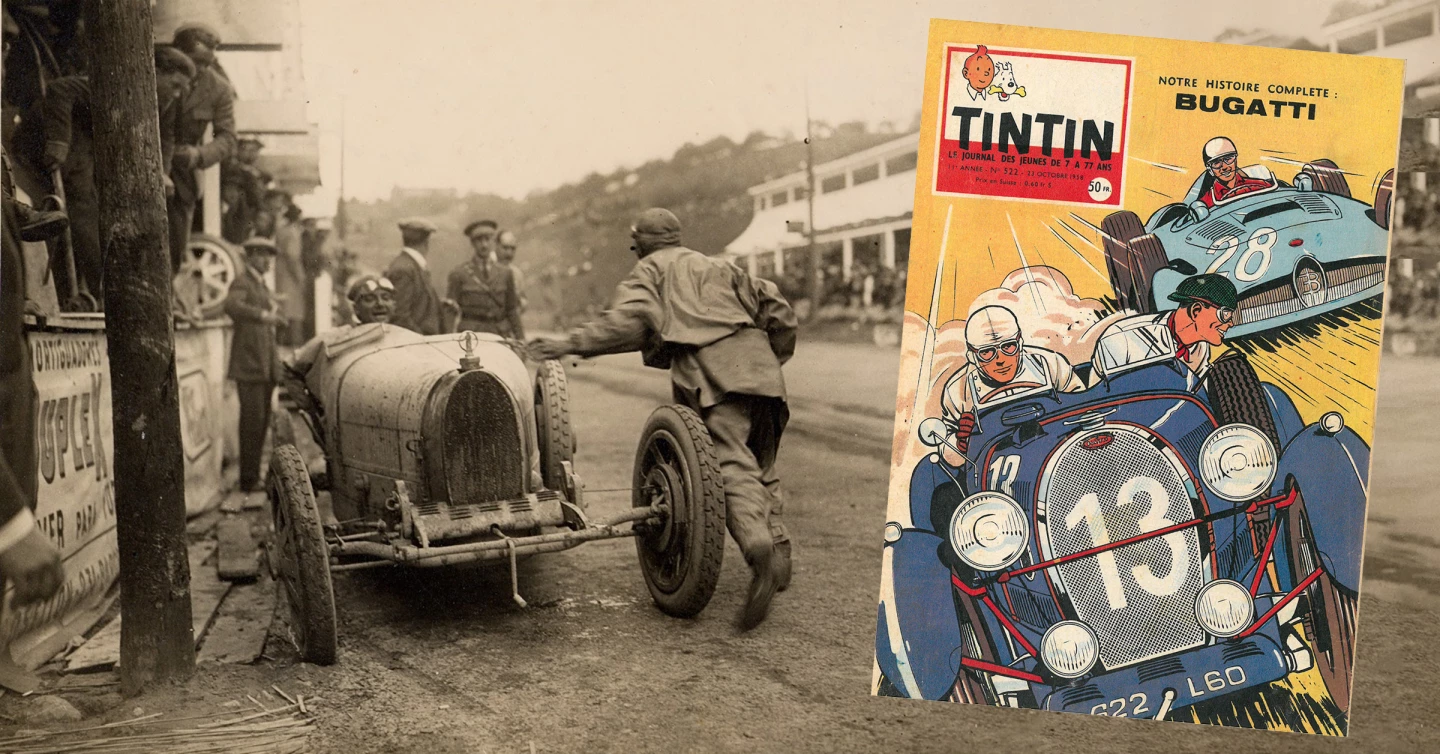
The car was a technological masterpiece: it used a crankshaft supported by two roller bearings and three ball bearings – and this crankshaft is still seen as an inspired feat of engineering to this day. It could run at an unprecedented 6,000 rpm and apart from incredible performance, the engines became renowned for reliability and endurance.
By using two carburetors instead of one, the car’s power increased to around 95 PS, which was transmitted by a wet multi-plate clutch. The drive system in the first versions of the Type 35 was able to achieve speeds of over 190 km/h (118 mph), but as the capacity increased and a compressor added, the Bugatti’s power increased to up to 140 PS and a top speed of 215 km/h (133 mph).
Bugatti relentlessly pursued lightweight construction and he developed those distinctive cast aluminum wheels with eight flat ribbon-style spokes so that he could reduce the unsprung mass and, hence improve the response of the suspension.

American racing car designer Harry A. Miller patented the idea of producing aluminum wheels in 1920, but didn’t produce any wheels. Bugatti succeeded shortly afterward in casting aluminum wheels, spokes and brake drums at the company foundry in Molsheim, using molds Ettore had designed himself. Bugatti developed the aluminum wheel further and also registered several new ideas for wheels amongst his more than 500 patents. In May 1924, he registered a patent for “improvements relating to vehicle wheels with cooling discs” and in 1933 the patent for an “elastic wheel with radially and axially sprung rim with respect to the wheel center”.
Bugatti wheels with cast-on generously ribbed brake drum offered additional benefits. The ring mounted on the outside edge of the wheel, initially with 32 then later with 24 bolts, prevented the tyre from jumping off even during fast cornering, enabling drivers to achieve faster cornering speeds. Thanks to central mounting, the wheels could be changed quickly.
These features were paired with low weight and thus lower unsprung mass compared with steel wheels. The lower the unsprung mass, the lower the moment of inertia and the better the handling. Consequently, the Type 35 was easier and more precise to steer, it braked better and the suspension was more comfortable than comparable racing cars of the time. During these early races, which often lasted six hours or more and sometimes even days, drivers were thus able to drive for longer, reach higher speeds and dominate the world’s race tracks between 1925 and 1930.
Just like Apple's iPod some 80 years later, the Bugatti wheels had a "killer app" aspect that took the ubiquitous and made it visually unique, enabling this apex racetrack predator to look quite unlike any other car in the world.

The visually distinctive open-top sports car is generally regarded as the world's most successful racing car. It was available to anyone who had the money, and between 1924 and 1930, it won more than 2,000 races, from the insignificant, to the most important. It won the Targa Florio in 1925, 1926, 1927, 1928 and 1929, the (original and the most important) French Grand Prix in 1926, 1928, 1929 and 1930 and it was so freely available that it won major races in every country from Argentina to Australia.
Imagine the sort of dominance that Mercedes-Benz enjoys in Formula One right now, then making Lewis Hamilton's Silver Arrow available to locals so that it could be driven in every national race of consequence anywhere on the planet. That is exactly what Bugatti did in the late 1920s.
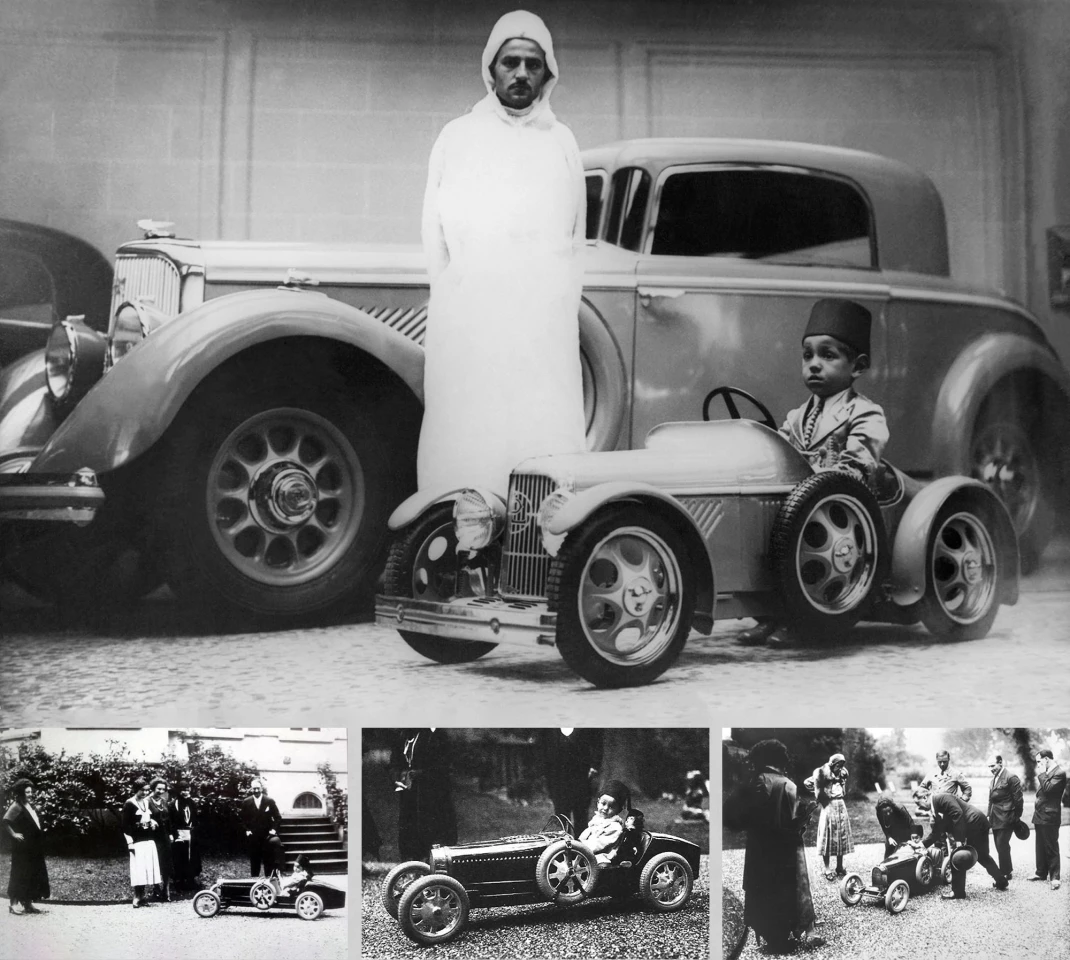
The Bugatti Bebe
That Bugatti was nigh on unbeatable was an immense source of French pride, and the thought that a child could have a powered replica of the car that was winning every major race was almost incomprehensible.

Only the wealthiest of people could afford a Bugatti and they regularly visited Bugatti’s Molsheim headquarters to specify their next vehicle. It quickly became obvious to Ettore that anyone who saw young Roland racing around the grounds of Molsheim in his beloved electric Bugatti, immediately wanted to buy one.

A second miniature T35 replica was prepared and exhibited at the 1927 Milan Motor Show, resulting in an avalanche of orders for what became known as the Bugatti Bebe (Baby), and subsequently the Bugatti Type 52, though there is some conjecture amongst purists as to whether Ettore ever recognized the T-52 nomenclature. More than 500 baby EVs were manufactured, and around 100 are still known today.

Now here's where the laws of supply and demand come into play, because there are two models of the Bugatti Baby. Roland was just four when Ettore built the car for him which unknowingly became the prototype, and Roland fitted the 1/2 scale car perfectly.
When sales of the Bugatti Baby began though, it quickly became evident that for larger and older children, there wasn't sufficient legroom. Hence, after 120 Baby Bugattis had been manufactured, the car was lengthened by 10 cm and an unacknowledged Series I and Series II were created. Early cars have a 122 cm wheelbase and a 16 louvre bonnet, while the later cars with the increased legroom have a 132 cm wheelbase and a 21 louvre bonnet.
This relative scarcity of the defacto Series I, combined with the reverence of the Bugatti name in the art marketplace (the Bugatti lineage numbers many sculptors, artists and designers, and Ettore's brother Rembrandt Bugatti is a well-known sculptor) have made the Series I cars with a serial number between 100 and 220 particularly prized considerably more valuable than those with the longer wheelbase.

Pint-sized auto icons
Now it would be easy to think that because the Bugatti Baby created the children's car collectible marketplace, that it would also be the most valuable.
That isn't the case now, and it is unlikely to be the case in the long run, because there are other children's cars with extraordinary workmanship, performance, provenance and scarcity.
Let's deal with those aspects individually.

One of the most valuable cars in the world is the Ferrari 250 Testa Rossa. In 2009, a 1957 Ferrari 250 Testa Rossa became the most expensive car in the world and the first car ever to sell for more than US$10,000,000. Another broke the world auction record when it sold for $16.4 million in 2011 and in 2014, a Testa Rossa is believed to have changed hands privately for £24 million (US$39.5 million).
In November 2013, a 1/2 scale Ferrari 250 Testa Rossa replica sold for $126,500 to become the world’s most expensive children’s car – a record it still holds.

The 1977 Italycar Ferrari 312 Formula One half-scale replica is a perfect example of what happens when a marketplace is not particularly well documented (stay tuned, we’re about to fix that).

The record price paid for one of the seven of these cars that were built is $82,500 at Gooding & Company' Official 2017 Pebble Beach auction in August 2017. That’s about what we think it was worth. It is one of a batch of just five 1/2 scale cars that were built in 1977 to commemorate Niki Lauda's 1976 Ferrari 312T2 Formula 1 Grand Prix car that finished second in the world championship with 76 points to Hunt’s McLaren on 77 points. The 2013 feature movie Rush is based on the 1976 Formula One Grand Prix Season.
The owner of Italy Car of Bologna built the first one for his daughter, finally creating five cars by approaching Ferrari's main suppliers and having them supply 1/2 scale versions of the items supplied to the Formula 1 team. That’s everything from a half-sized Momo steering wheel to half-sized Goodyear tires. The miniature F1 car was shown at the Bologna Motor Show, and Niki Lauda ordered one for his son. Italy Car subsequently filed for bankruptcy and Pony Car acquired the remaining parts and chassis, finishing another two specimens before the project was shelved because resupply of the components was prohibitively expensive.
The car has a two-stroke engine with starter, a sophisticated electrical system with a rear light as per the original Ferrari 312T2, a two-speed-plus-reverse gearbox, independent suspension all round, hydraulic disc brakes, alloy wheels, slick tires, racing seat belt, and extraordinary attention to detail.
Now here’s the remarkable thing. Several other such cars from the original seven have been to auction in recent times, with the car pictured above failing to sell at Amelia Island in March 2019, another failing to sell in Monaco in May 2018 and yet another selling for $46,000 on Bring-a-trailer in June 2020.

Derek Bell MBE won the 24 Hours of Le Mans five times, the Daytona 24 Hour three times and the World Sportscar Championship twice. He raced F1 for Ferrari, Wheatcroft, McLaren, Surtees and Tecno and yet one of his most cherished memories related to the 936 Junior car created by Porsche to commemorate his 1981 win. Bell was given the car in the early 1980s and it has been stored until his son Sebastian dusted it off and started driving it.
The next year Sebastian received an invitation to drive in the Little Big Mans at the Le Mans Classic. Sebastian won leading Derek to comment: "Such a memory to think that I won at Le Mans in the Jules 936 in 1981 with Jackie Ickx and I finished third with older son Justin in Harrods McLaren in 1995 and there we were watching young Sebastian driving a model of that winning car on the same track, albeit somewhat slower."
Derek eventually sold his Porsche 936 Replica ... and yet it sold for just £17,500 ($27,536) in June, 2015. By any measure, that purchase at that price was a bargain, as it was a replica of the car in which he won Le Mans, along with its wonderful back story. As this marketplace matures, the same key variables in determining auction prices will apply to Junior cars as they do for Senior cars.

Performance and workmanship are not solely the domain of people such as Mario Allegretti, who built exquisite cars in the 1930s. The prices of children's cars are still an order of magnitude, perhaps two orders of magnitude less than the full-scale cars they emulate.
As we have performed our research on this marketplace, the name of Dean McLaren of McLaren Classic Restorations cropped up again and again. Dean builds mainly full-scale cars, but in general, he crafts beautiful things. A Shelby Refrigerator that makes a V8 sound when you open the doors sold for $22,400 in Las Vegas in 2013, and whenever his children's cars go to auction, they fetch remarkable figures, such as the 3/4-scale Shelby Cobra above which sold for $57,500.

Two other children's cars built by Dean that necessitate mention include the 1/2 scale Ford GT40 Go-Kart above that sold for $53,760 at a Barrett-Jackson Scottsdale auction in 2011, and a 1/2 scale Ford GT40 Le Mans-winning replica that fetched $40,000. There's only one reason those contemporary items sold for that much money – insane quality of workmanship! The additional advantage of having Dean based in California is that specific children's cars can be commissioned to order.
There are dozens more images from the Junior Concours of Elegance in the image library for this article. Simply click on any image and scroll right.

